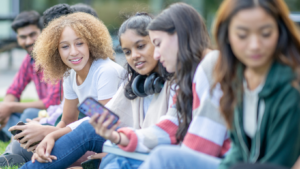In the digital age, media literacy isn’t just a handy skill, it’s a necessity. From social media to streaming platforms, digital media has woven itself into the fabric of our daily lives.
This article will delve deeper into the importance of digital media literacy in our increasingly connected world. So stay tuned if you’re ready to boost your digital media literacy skills and become a more informed digital citizen.
Digital Media Literacy
Optimal digital media literacy encompasses more than just familiarity with the workings of electronic devices. It includes a deep comprehension of how digital media interacts with societal, cultural, and political elements. It interprets how messages are constructed, evaluates their impact, and understands what outcomes they are designed to achieve.

Additionally, digital media literacy spans discerning the validity and authenticity of online content. It exhibits the ability to critically evaluate the accuracy and relevancy of digital content. Hence, with digitization dovetailing into every aspect of life, understanding the dynamics of digital media literacy hence becomes paramount.
Digital media literacy’s importance resonates louder in this age of rampant misinformation and disinformation. In this connection, the ability to sift through the sea of online content emerges as a critical skill. It helps individuals navigate online spaces intelligently, segregating the chaff of fake information from the grain of factual data.
Beside its role as a tool against misinformation, digital media literacy also empowers individuals with an understanding of the media’s role in shaping societal values and opinions. It fosters awareness of biases, stereotypes, and diverse perspectives in digital contexts. Thus, digital media literacy impacts the very core of digital citizenship – the responsible use of technology.
Components of Digital Media Literacy
Digital media literacy embodies a host of diverse skills and capabilities, comprising viable elements like critical thinking and evaluation, plus content creation.

A pivotal component of digital media literacy, Critical Thinking and Evaluation, spotlight the capacity to critically analyze digital content. This stems beyond just consuming information. The ability to examine sources for credibility, identify potential biases, and discern between factual information and fake news falls under critical thinking. For instance, digital citizens genuinely engaging in digital literacy won’t merely accept a social media post or blog at face value. Instead, they would scrutinize the content’s reliability, delve into the original source, and perhaps cross-verify with further authoritative references.
The second crucial ingredient of digital media literacy is Content Creation. This moves beyond mere “reading” of digital content into the realm of “writing” or generating it. Content creation ranges from writing a simple tweet to generating a sophisticated webpage or video. It focuses on being able to communicate effectively and appropriately in various digital environments, respecting the norms and etiquette of these digital spaces. For instance, a digitally literate blogger may create search engine optimized blog posts that not only engage readers but also rank high in search engine outputs. Also, they would ensure adequate privacy settings and respect copyright norms while sharing or sourcing multimedia content online. Hence, the essence of content creation isn’t limited to creation alone but requires a comprehensive understanding of the digital world and its dynamics.

The digital landscape is a complex terrain. Digital media literacy is the compass that guides us through it, helping us discern real information from fake. It’s not just about understanding content but also about evaluating its validity and navigating the information highway. Overcoming challenges such as information overload and misinformation always requires robust strategies. Education programs that focus on critical analysis and content creation are crucial. Resources such as fact-checking websites and media literacy handbooks are invaluable. Technology too plays a vital role – AI and VR are emerging as powerful tools for improving digital literacy. By integrating education, resources, and technology, we can enhance digital media literacy, making the digital world a less daunting place to explore.
